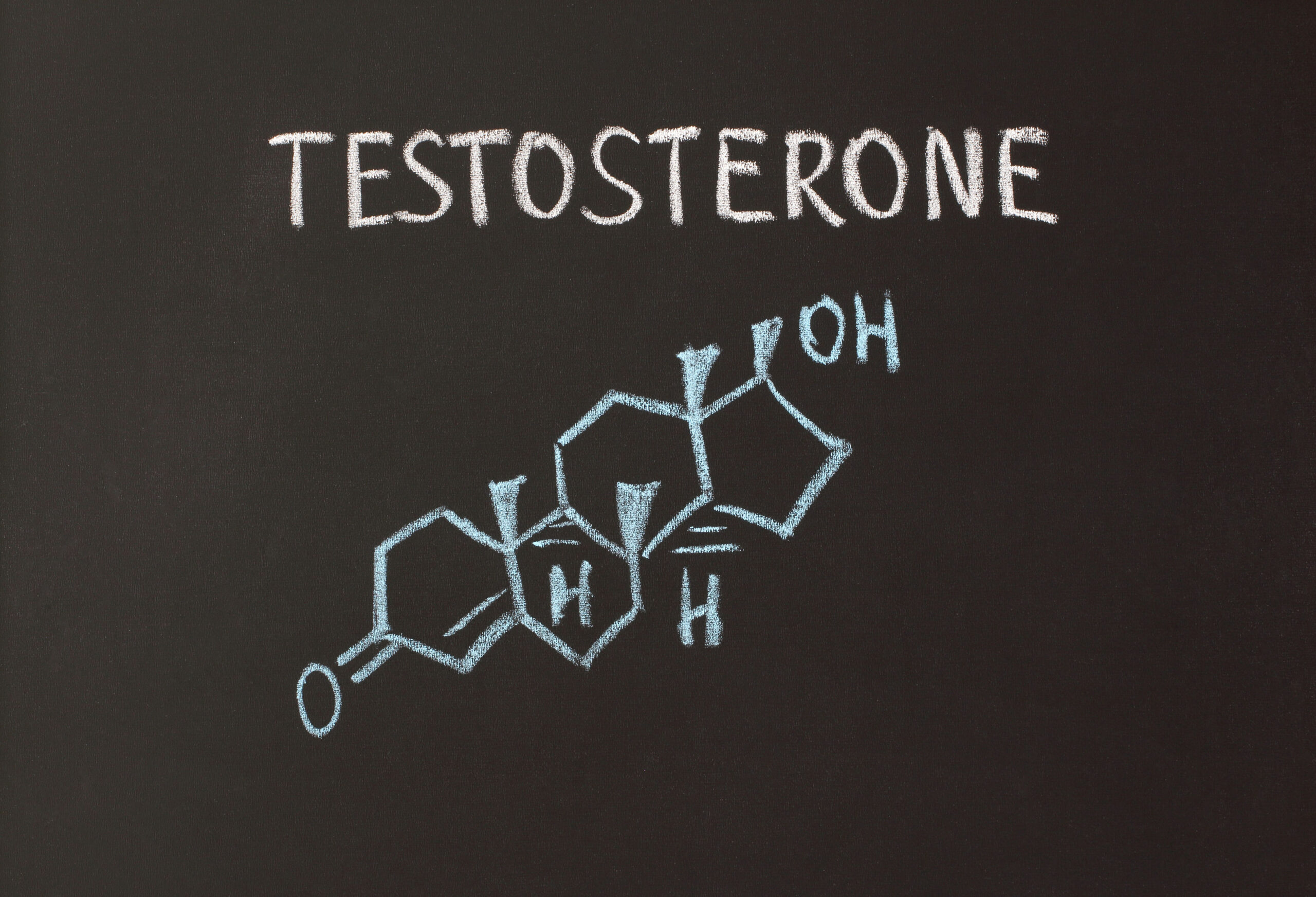Proven Ways to Boost Testosterone Naturally and Save Money
Updated: Nov 26, 2025
You’re spending hundreds on supplements that don’t work while the real testosterone boosters cost next to nothing. Let’s cut through the industry noise and focus on what actually moves the needle—without emptying your wallet.

Why Your Testosterone Levels Actually Matter
Testosterone isn’t just about muscles and gym performance. It’s the hormone that determines whether you wake up ready to tackle the day or hit snooze five times. When levels drop, everything gets harder—building strength, staying focused at work, even maintaining the drive to do things you used to enjoy. The frustrating part? Most men don’t realize declining testosterone is behind these struggles until they’ve already spent months feeling off.
Here’s what the supplement industry won’t tell you: expensive testosterone replacement therapy isn’t the starting point. For most guys, natural approaches work remarkably well. We’re talking about sustainable improvements that don’t come with dependency issues or the side effects pharmaceutical solutions can bring. The Endocrine Society offers solid foundational information if you want to understand the science, but the practical steps are simpler than you’d think.
What You Eat Directly Controls Your Hormone Production
Your diet is either supporting testosterone synthesis or sabotaging it—there’s not much middle ground. Zinc-rich foods deserve serious attention because this mineral is essential for testosterone production. Pumpkin seeds, oysters, and beans aren’t exciting, but they’re proven to work. Healthy fats from sources like avocados, olive oil, and nuts give your body the raw materials it needs to manufacture hormones efficiently. Your body can’t make testosterone from air and willpower.
Dark leafy greens like spinach pack magnesium, another critical player in hormone regulation. You don’t need exotic superfoods or expensive powders. Regular grocery store ingredients handle the job fine.
What you eliminate matters just as much as what you add. Processed foods and excess sugar are testosterone killers. Diets heavy in refined carbs and trans fats contribute directly to obesity and insulin resistance, both linked with lower testosterone levels. That afternoon soda? It’s not just affecting your waistline—it’s actively working against your hormonal health. Swap it for green tea or sparkling water. Small changes compound over weeks and months. The Harvard School of Public Health provides a practical guide to building balanced meals that support overall health, including hormone function.
Lift Heavy Things and Your Body Responds
Exercise ranks among the most reliable testosterone boosters available, and it’s completely free. Strength training works because it activates large muscle groups and signals your body to release testosterone to support growth and recovery. Compound lifts—squats, deadlifts, bench presses—are particularly effective. These movements recruit multiple muscle groups simultaneously, creating the metabolic stress that triggers hormonal responses.
You don’t need a fancy gym membership. Bodyweight exercises, resistance bands, or a basic barbell setup at home get the job done. Consistency beats perfection every time. Three solid strength sessions per week will outperform sporadic intense workouts. Research published in the National Library of Medicine confirms that consistent resistance training improves both testosterone and metabolic health markers.
High-intensity interval training offers another powerful option. Short bursts of maximum effort—sprints, cycling intervals, burpees—followed by rest periods help regulate hormones while burning fat. The beauty of HIIT is efficiency. Twenty minutes of focused intervals can deliver better results than an hour of steady cardio.
There’s a catch though. Long-duration endurance exercise, when overdone, can actually suppress testosterone. Marathon training and excessive cardio sessions elevate cortisol, which competes with testosterone production. Balance is essential. Mix your training styles and don’t fall into the trap of thinking more is always better.
Sleep Is Where Testosterone Gets Made
Most of your testosterone production happens during deep sleep. If you’re consistently getting less than seven hours, you’re biochemically limiting your hormone levels before even considering diet or exercise. Studies show just one week of sleep restriction can significantly lower testosterone—we’re talking measurable drops that affect how you feel and perform.
Creating a sleep routine isn’t complicated, but it requires discipline. Set a consistent bedtime. Limit screen exposure in the hour before sleep because blue light interferes with melatonin production. Keep your bedroom cool and dark. These aren’t revolutionary insights, but most guys ignore them while searching for complex solutions.
Your body doesn’t care about your excuses. It needs seven to nine hours to handle essential repair work, including hormone regulation. Prioritize sleep the same way you’d prioritize a crucial work meeting. It’s that important.
Stress Management Isn’t Optional
Chronic stress destroys testosterone through a straightforward mechanism: it elevates cortisol, and cortisol directly competes with testosterone. When you’re constantly stressed, your body prioritizes survival hormones over reproductive and growth hormones. That’s not a theory—it’s basic endocrinology.
Daily walks help more than you’d expect. Getting outside, preferably in nature, reduces cortisol levels. You don’t need to meditate for hours or attend expensive yoga retreats. Simple stress-reduction practices work if you actually do them consistently. Headspace offers guided meditation options that won’t cost much if you want structured support.
Even ten minutes of intentional breathing exercises can shift your nervous system out of fight-or-flight mode. The problem isn’t finding effective stress management techniques—they’re everywhere. The problem is most people don’t treat stress reduction as non-negotiable until their health forces the issue.
Smart Supplementation Without Wasting Money
Not all supplements are scams, but most testosterone boosters sold online are overpriced garbage. Focus on the basics that have actual research backing them.
Vitamin D supplementation makes sense for most men, especially if you work indoors. The link between vitamin D and testosterone is well-established. A daily supplement costs pennies compared to proprietary blends with fancy marketing. Magnesium and zinc supplements fill gaps when your diet falls short. These aren’t exciting purchases, but they work.
Ashwagandha has gained legitimate attention for reducing stress and modestly improving testosterone levels. It’s widely available at reasonable prices. Since stress directly impacts hormone production, an adaptogen like ashwagandha can be a smart addition to your routine.
Before buying any supplement, check trusted medical resources like the Cleveland Clinic to verify you’re investing in something evidence-based rather than marketing hype. The supplement industry thrives on selling hope in a bottle. Don’t fall for it.
Body Fat Is Actively Lowering Your Testosterone
Here’s an uncomfortable truth: excess body fat, particularly around your midsection, contains an enzyme called aromatase that converts testosterone into estrogen. The more fat you carry, the more testosterone you’re losing to this conversion process. It’s a vicious cycle—low testosterone makes it harder to lose fat, and excess fat lowers testosterone further.
Even moderate weight loss can significantly improve testosterone production. Studies show that losing around ten percent of body weight leads to measurable increases in testosterone levels. This is why lifestyle approaches often outperform expensive therapies long-term. You’re addressing the root cause rather than masking symptoms.
Combining strength training with balanced nutrition creates a powerful fat-loss environment. You don’t need extreme diets or complicated meal plans. Consistent caloric awareness and regular resistance training handle most of the work. Men’s Health provides free workout routines and fitness guidance that’ll get you started without requiring a personal trainer.
Skip the Expensive Traps
The testosterone industry profits from confusion and desperation. Overpriced “booster” pills flood the market with unproven ingredients and filler compounds that do nothing except drain your bank account. Proprietary blends hide behind fancy labels while delivering zero results.
Testosterone replacement therapy has legitimate medical applications, but it shouldn’t be your first move. It’s expensive—often thousands of dollars annually—and comes with potential side effects and dependency issues. Get blood work done first. Consult with a knowledgeable healthcare provider who’ll be honest about whether you actually need pharmaceutical intervention or if lifestyle changes should come first.
Many men discover their testosterone levels are within normal range once properly tested. The symptoms they attributed to low testosterone were actually from poor sleep, chronic stress, or inadequate nutrition. Fixing those costs far less than years of medical treatments.
Building a Sustainable Plan That Works
Forget quick fixes and miracle solutions. Sustainable testosterone optimization comes from stacking small, consistent habits over time. Here’s where to start:
- Commit to three strength training sessions weekly. That’s manageable for most schedules and enough to trigger positive hormonal adaptations without overwhelming your recovery capacity.
- Prioritize seven to nine hours of sleep most nights. Not every night will be perfect—life happens—but make it your default target and protect your sleep schedule like you’d protect an important meeting.
- Add one zinc-rich or magnesium-rich food to your daily meals. Whether it’s a handful of pumpkin seeds, a serving of spinach, or some beans with dinner, small dietary additions compound over time.
- Track these habits without obsessing over them. Simple awareness drives consistency. You don’t need perfect execution, just steady effort that builds momentum over weeks and months.
You’ll notice improvements in energy, mood, and workout performance before any lab results confirm changes. These subjective markers matter. If you’re sleeping better, recovering faster, and feeling more motivated, something’s working. Affordable home testing kits exist if you want numerical confirmation, but don’t let perfect be the enemy of good.
When Professional Help Makes Sense
If symptoms persist despite genuine lifestyle changes—we’re talking consistent effort for at least three months—then consulting a doctor is smart. Chronic fatigue, severely diminished libido, or progressive muscle loss despite training might indicate clinically low testosterone requiring medical attention.
A simple blood test confirms whether you’re dealing with actual hormonal deficiency or something else entirely. Many conditions mimic low testosterone symptoms. Thyroid issues, vitamin deficiencies, depression, and sleep disorders can all present similarly. Proper diagnosis prevents wasted time and money chasing the wrong solution.
If medical therapy becomes necessary, combining pharmaceutical treatment with the lifestyle strategies covered here maximizes results while potentially minimizing dosages and costs. Your doctor can adjust protocols based on your comprehensive approach rather than relying solely on medication.
The Bottom Line on Natural Testosterone Optimization
Raising testosterone doesn’t require risky treatments or expensive supplements. The fundamentals work: nutritious eating focused on whole foods and adequate micronutrients, consistent resistance training that challenges your muscles, sleep optimization that allows proper recovery, stress management that keeps cortisol in check, and smart supplementation with proven basics like vitamin D and zinc.
These strategies improve overall health while supporting hormone balance. You’re not just boosting one biomarker—you’re building a foundation for better energy, strength, focus, and longevity. That’s a far better investment than short-term fixes that promise everything and deliver nothing.
The cost? Mostly just commitment and consistency. Start with one or two changes this week. Add more as those become habitual. In three months, you’ll be a different person—and your bank account will look better too.

